Time Series Forecasting with NumPyro
PyData Amsterdam 2024
Outline
- Introduction
Scanin NumPyro- Exponential Smoothing
- ARIMA
- Intermittent Demand
- Censored Demand
- Hierarchical Models
- Price Elasticities
- PyMC State Space Module
- References
Statsmodels - Time Series Models 🤓
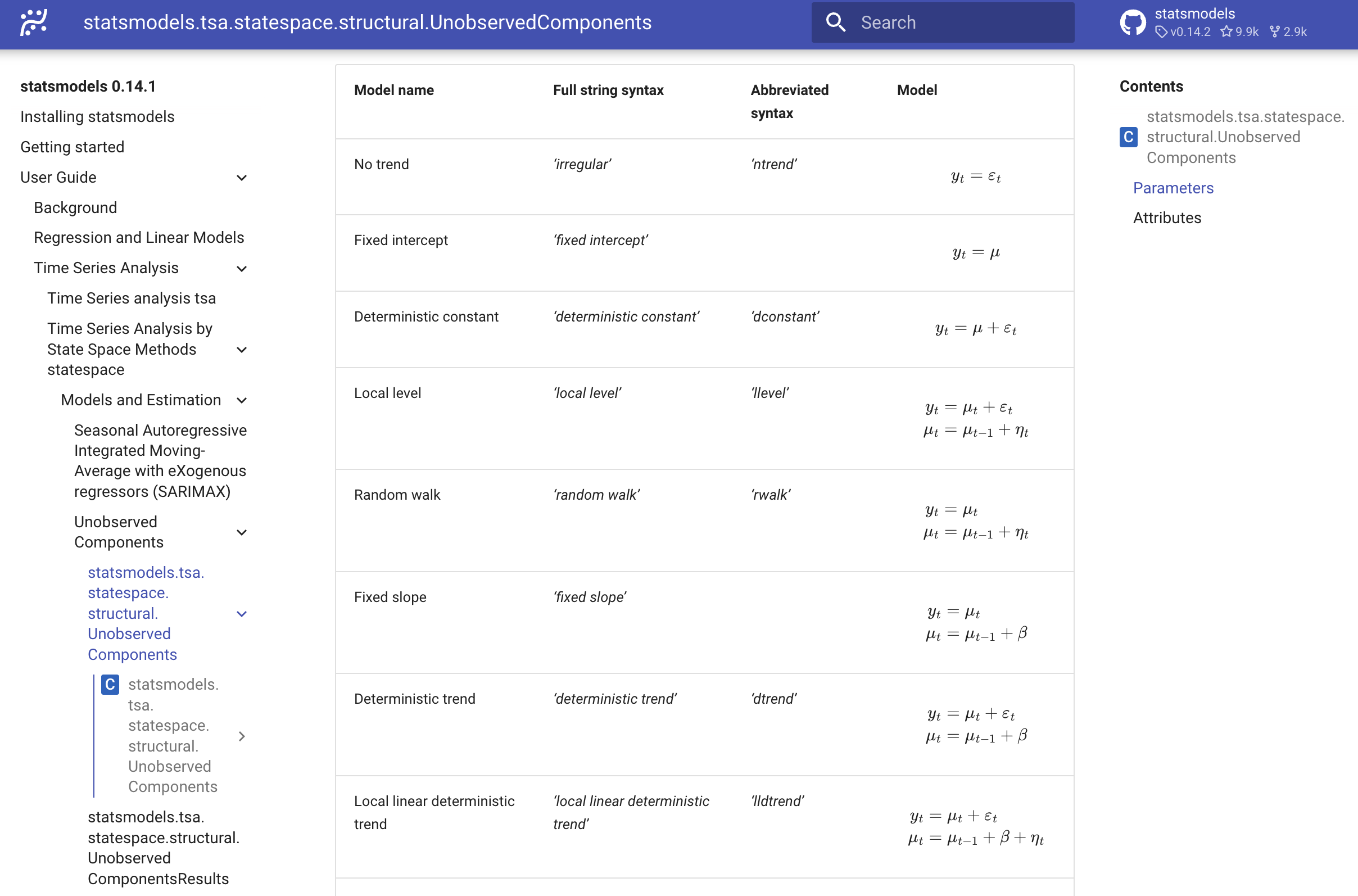
Nixtla ✨
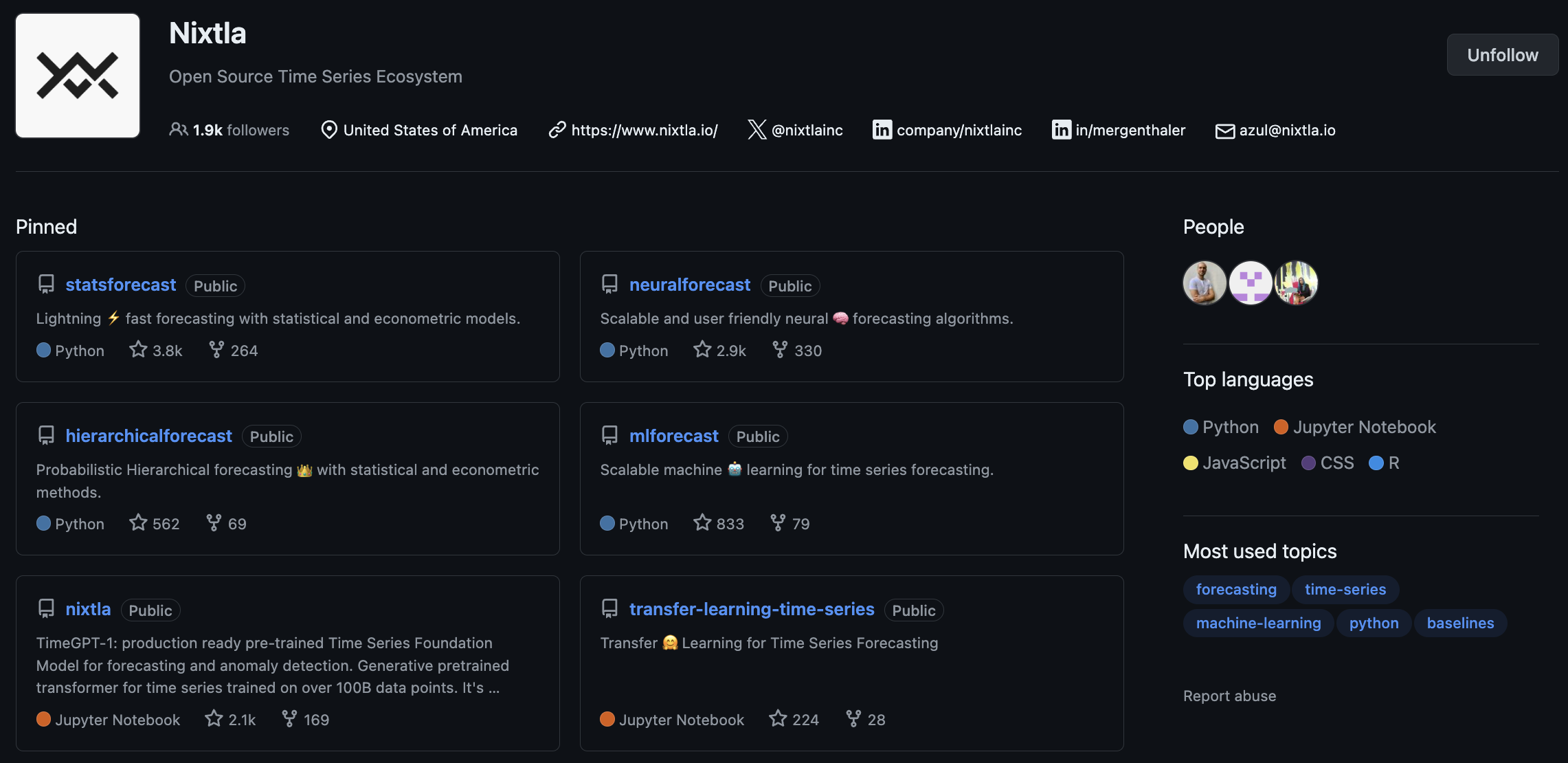
Pyro Forecasting Module 🔥
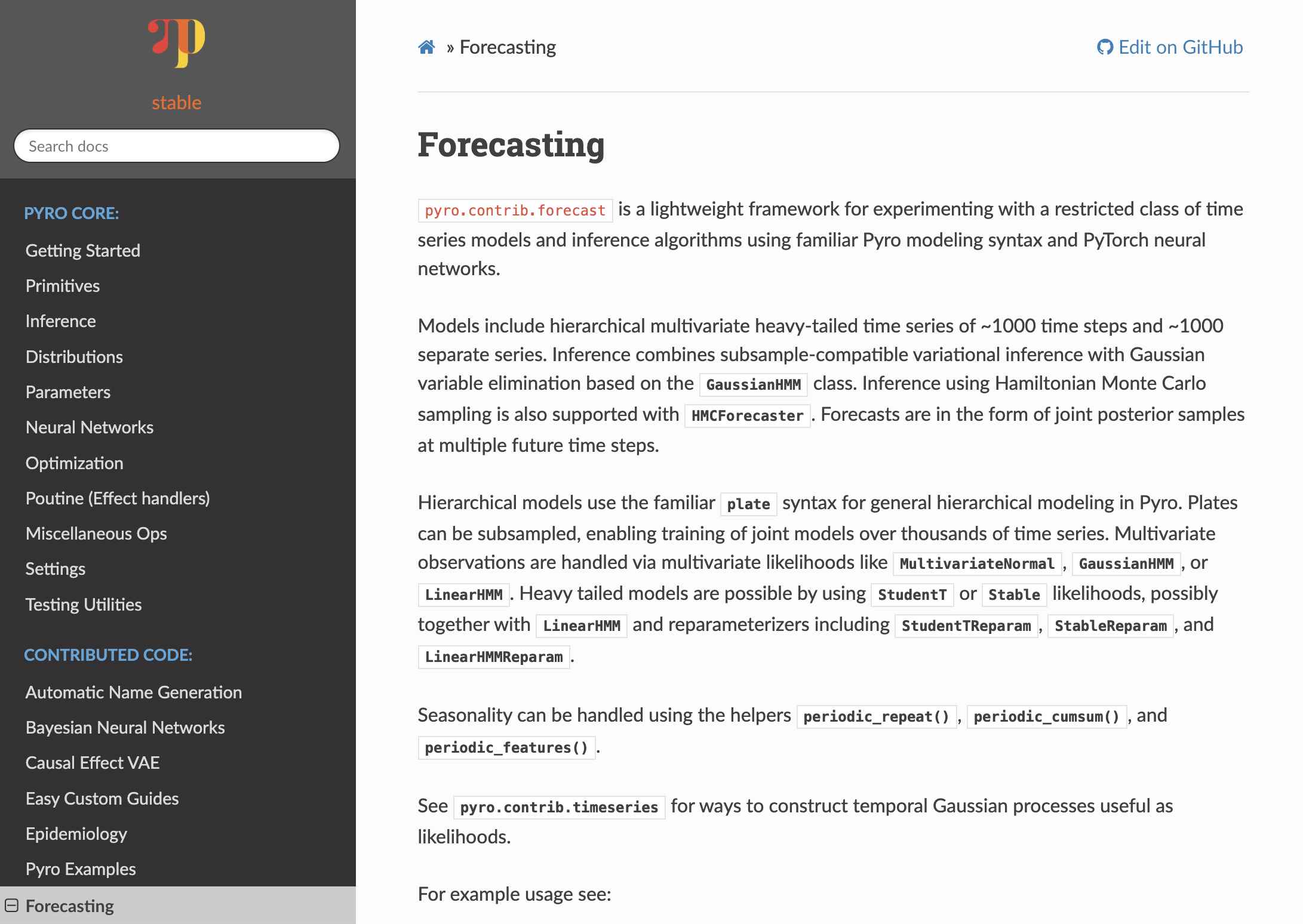


NumPyro - SGT Example Model 🫠
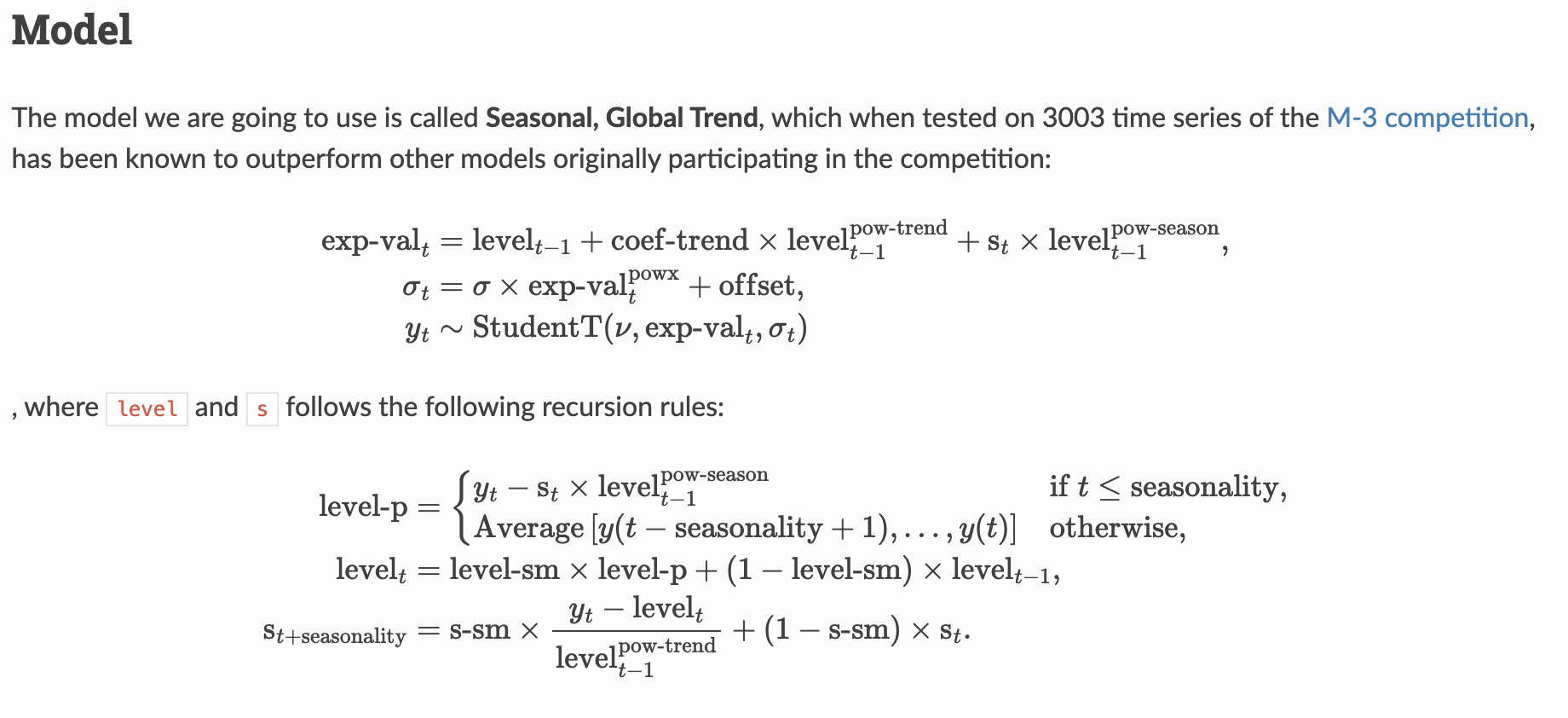
😅 …
Scan ⭐
An efficient implementation of for loops
def scan(f, init, xs):
"""Pure Python implementation of scan.
Parameters
----------
f : A a Python function to be scanned.
init : An initial loop carry value
xs : The value over which to scan along the leading axis.
"""
carry = init
ys = []
for x in xs:
carry, y = f(carry, x)
ys.append(y)
return carry, np.stack(ys)- For loop
def sum_of_powers_for_loop(phi: float, h: int) -> float:
"phi -> 1 + phi + phi^2 + ... + phi^h"
return sum(phi**i for i in range(1, h + 1))
assert sum_of_powers_for_loop(2, 0) == 0
assert sum_of_powers_for_loop(2, 1) == 2
assert sum_of_powers_for_loop(2, 2) == 2 + 2**2
assert sum_of_powers_for_loop(2, 3) == 2 + 2**2 + 2**3- Scan 😎
Example: Exponential Smoothing
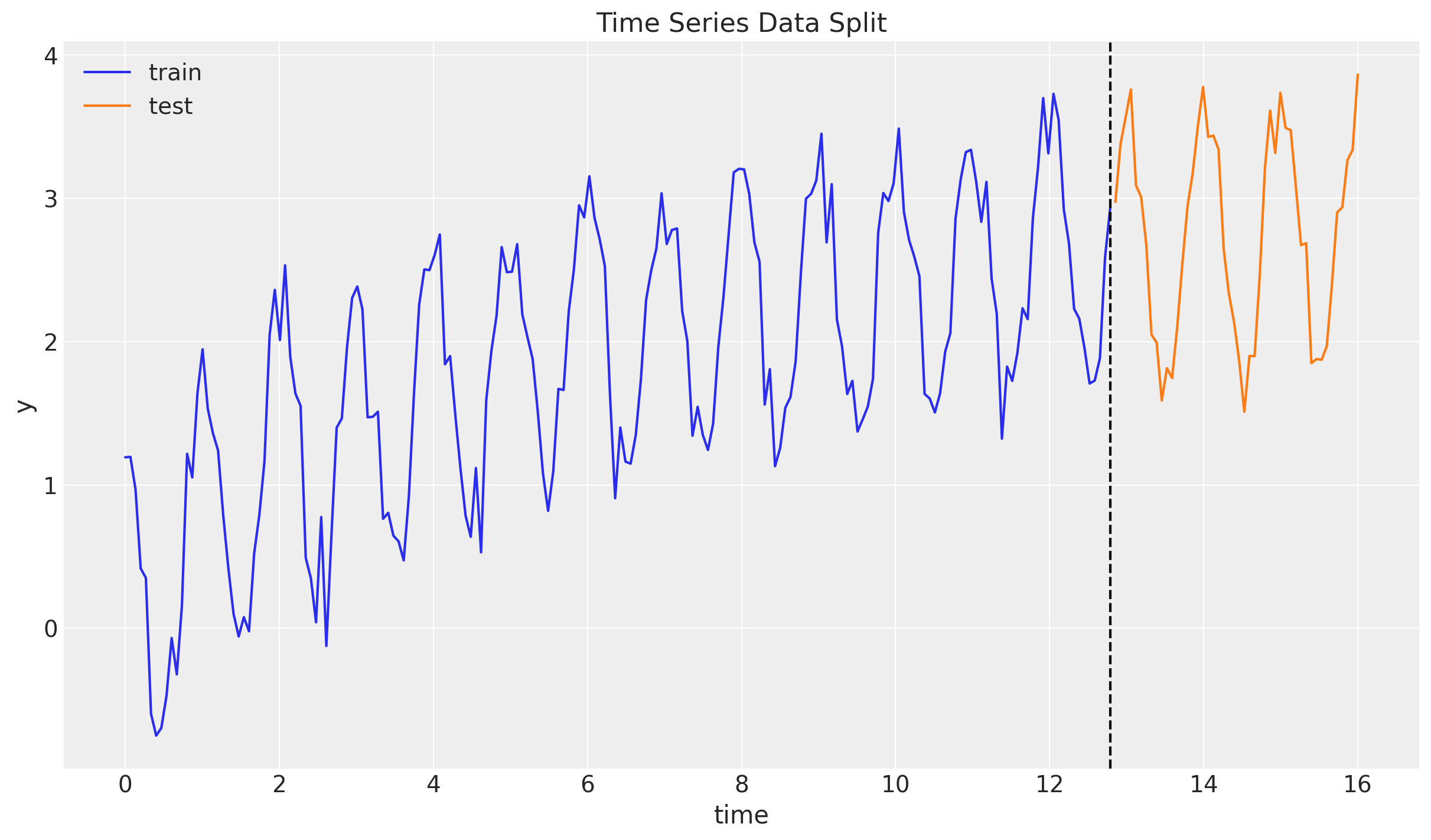
Example: Exponential Smoothing
\[ \begin{align*} \hat{y}_{t+h|t} = & \: l_t \\ l_t = & \: \alpha y_t + (1 - \alpha)l_{t-1} \end{align*} \]
- \(y_t\) is the observed value at time \(t\).
- \(\hat{y}_{t+h|t}\) is the forecast of the value at time \(t+h\) given the information up to time \(t\).
- \(l_t\) is the level at time \(t\).
- \(\alpha\) is the smoothing parameter. It is a value between 0 and 1.
Example: Exponential Smoothing
\[ \begin{align*} \hat{y}_{t+h|t} = & \: l_t \\ l_t = & \: \alpha y_t + (1 - \alpha)l_{t-1} \end{align*} \]
Example: Exponential Smoothing
def level_model(y: ArrayLike, future: int = 0) -> None:
# Get time series length
t_max = y.shape[0]
# --- Priors ---
## Level
level_smoothing = numpyro.sample(
"level_smoothing", dist.Beta(concentration1=1, concentration0=1)
)
level_init = numpyro.sample("level_init", dist.Normal(loc=0, scale=1))
## Noise
noise = numpyro.sample("noise", dist.HalfNormal(scale=1))
# --- Transition Function ---
def transition_fn(carry, t):
. . .
# --- Run Scan ---
with numpyro.handlers.condition(data={"pred": y}):
_, preds = scan(
transition_fn,
level_init,
jnp.arange(t_max + future),
)
# --- Forecast ---
if future > 0:
numpyro.deterministic("y_forecast", preds[-future:])Example: Exponential Smoothing
Posterior Distribution Parameters

Example: Exponential Smoothing
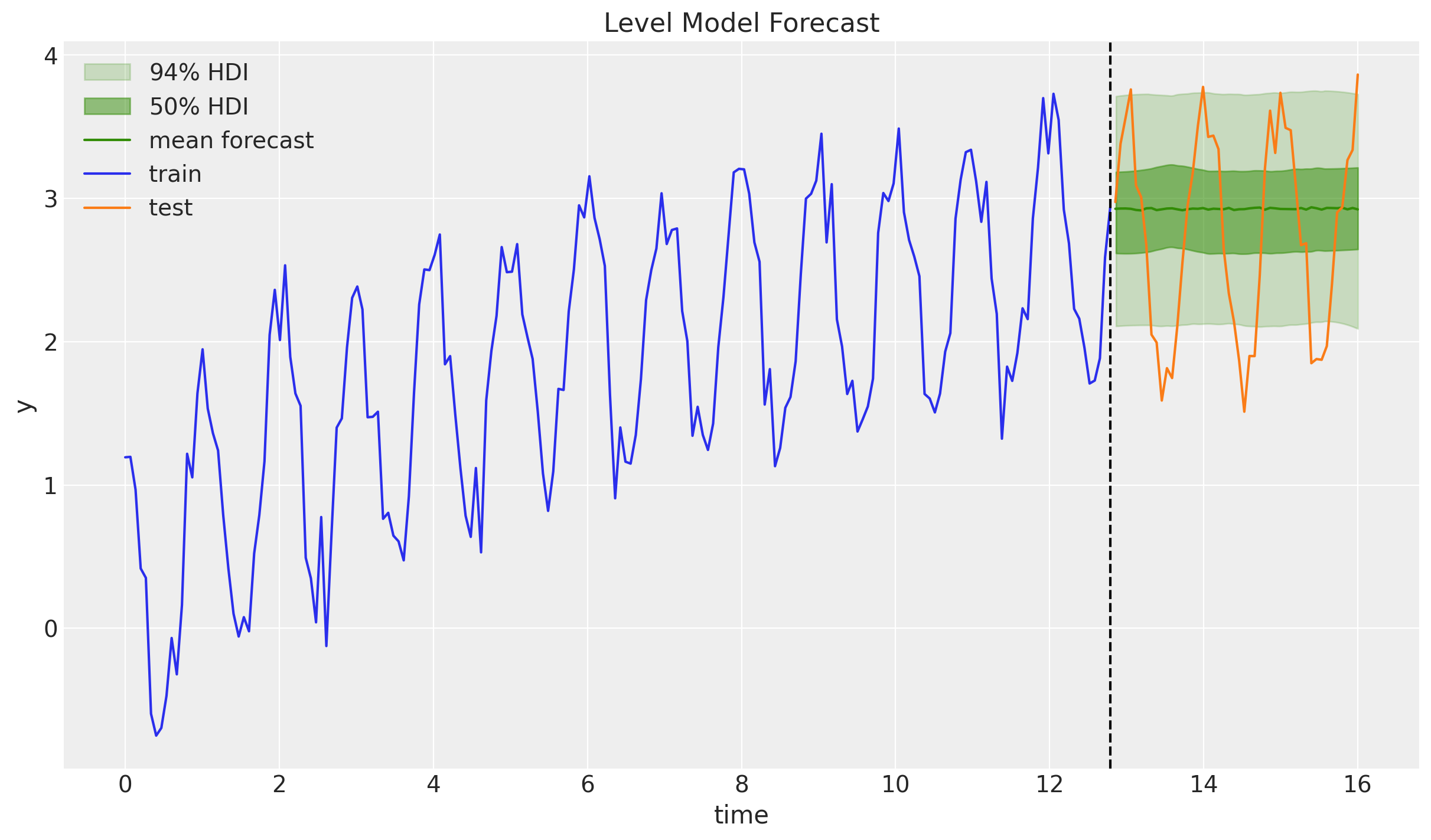
Example: Exponential Smoothing
Trend + Seasonal + Damped

Example: ARMA(1, 1) Model
def transition_fn(carry, t):
y_prev, error_prev = carry
ar_part = phi * y_prev
ma_part = theta * error_prev
pred = mu + ar_part + ma_part
error = y[t] - pred
return (y[t], error), error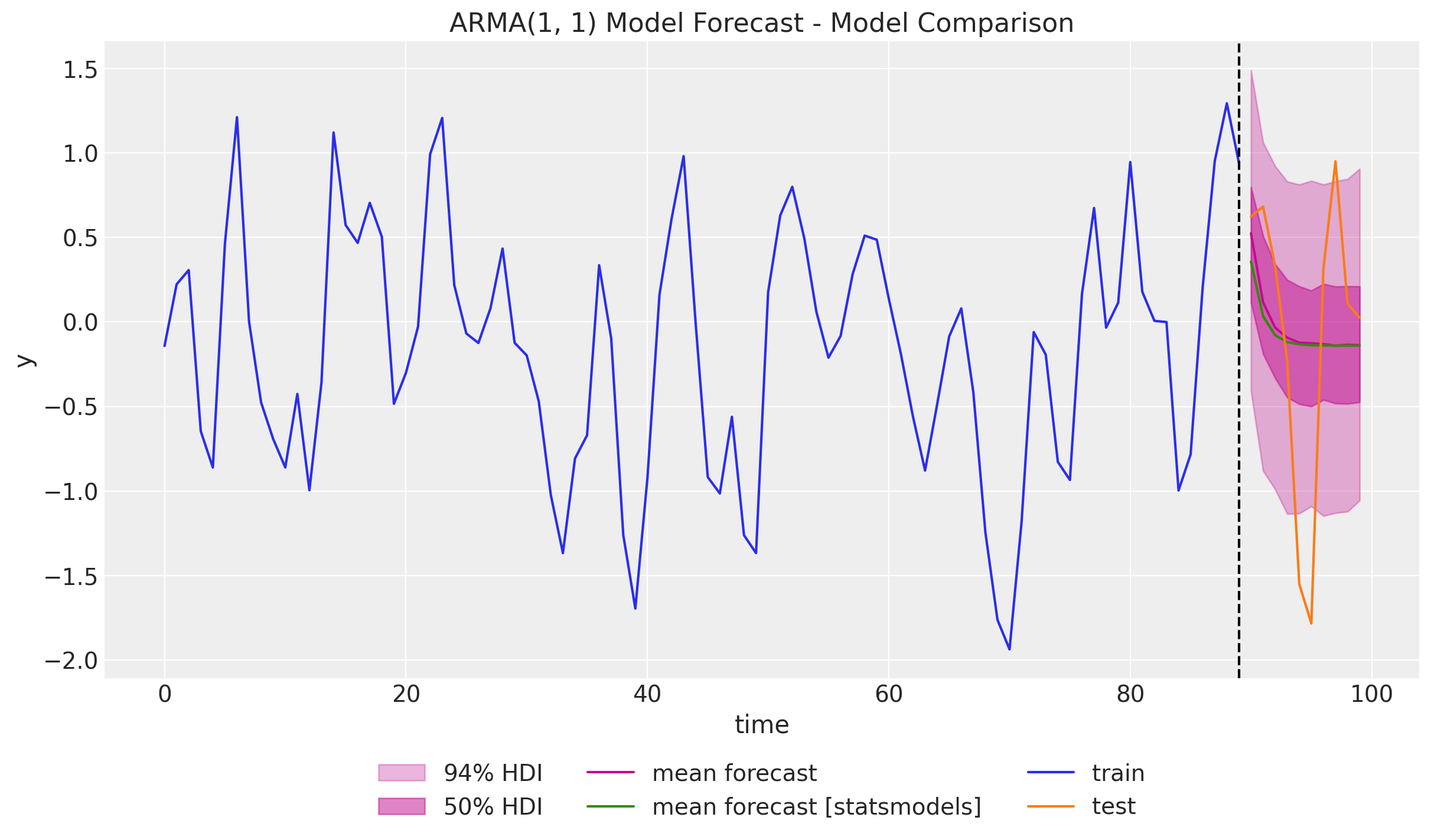
Intermittent Time Series
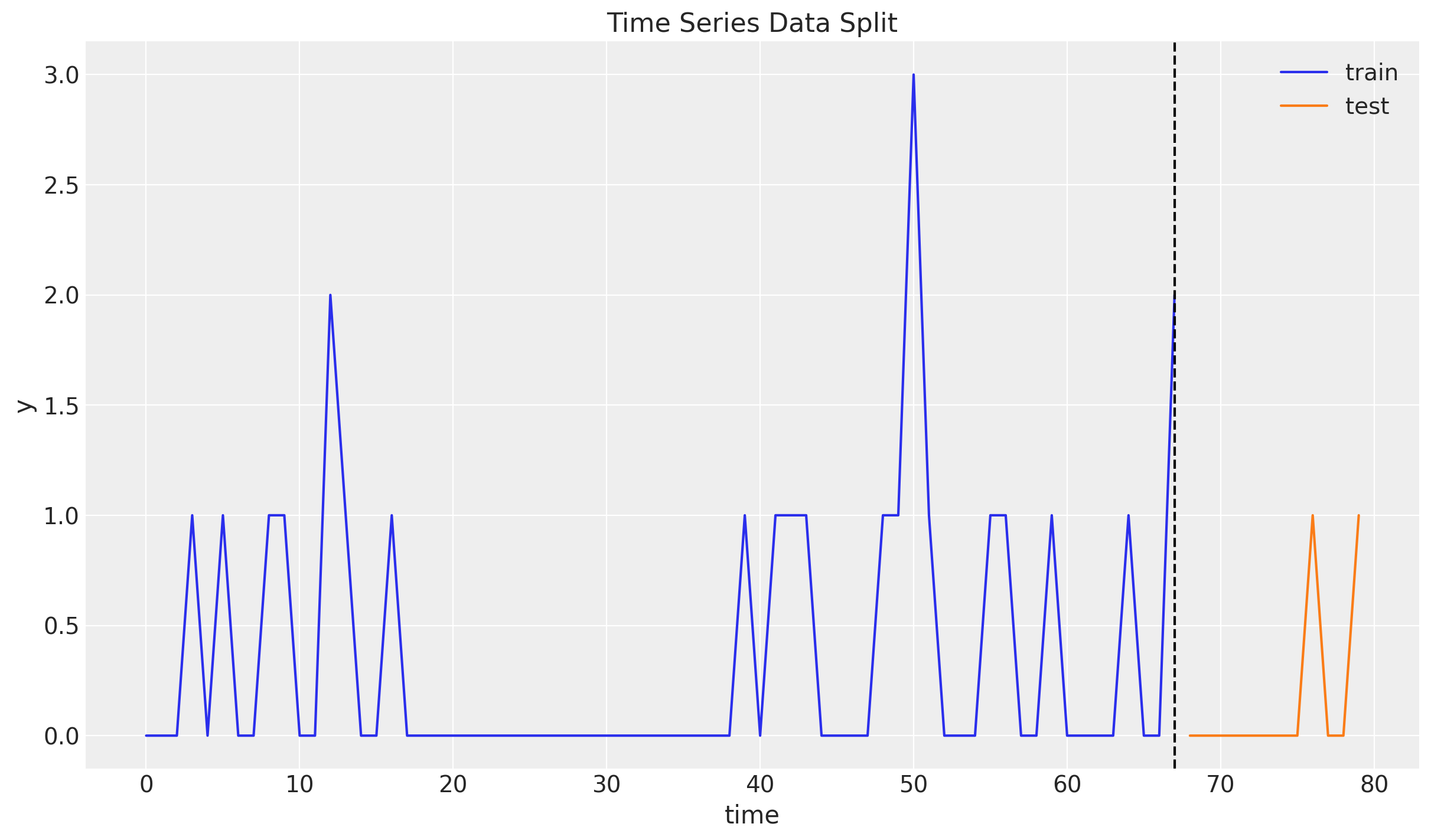
Croston’s Method
The method is based on the idea of separating the demand size \(z_t\) and the demand interval \(p_t\), and then forecasting them separately using simple exponential smoothing.
- \(z_t\): keep the non-zero values of \(y_t\).
- \(p_t\): keep the time between non-zero values of \(y_t\).
\[ \hat{y}_{t+h} = \frac{\hat{z}_{t+h}}{\hat{p}_{t+h}} \]
Croston’s Method
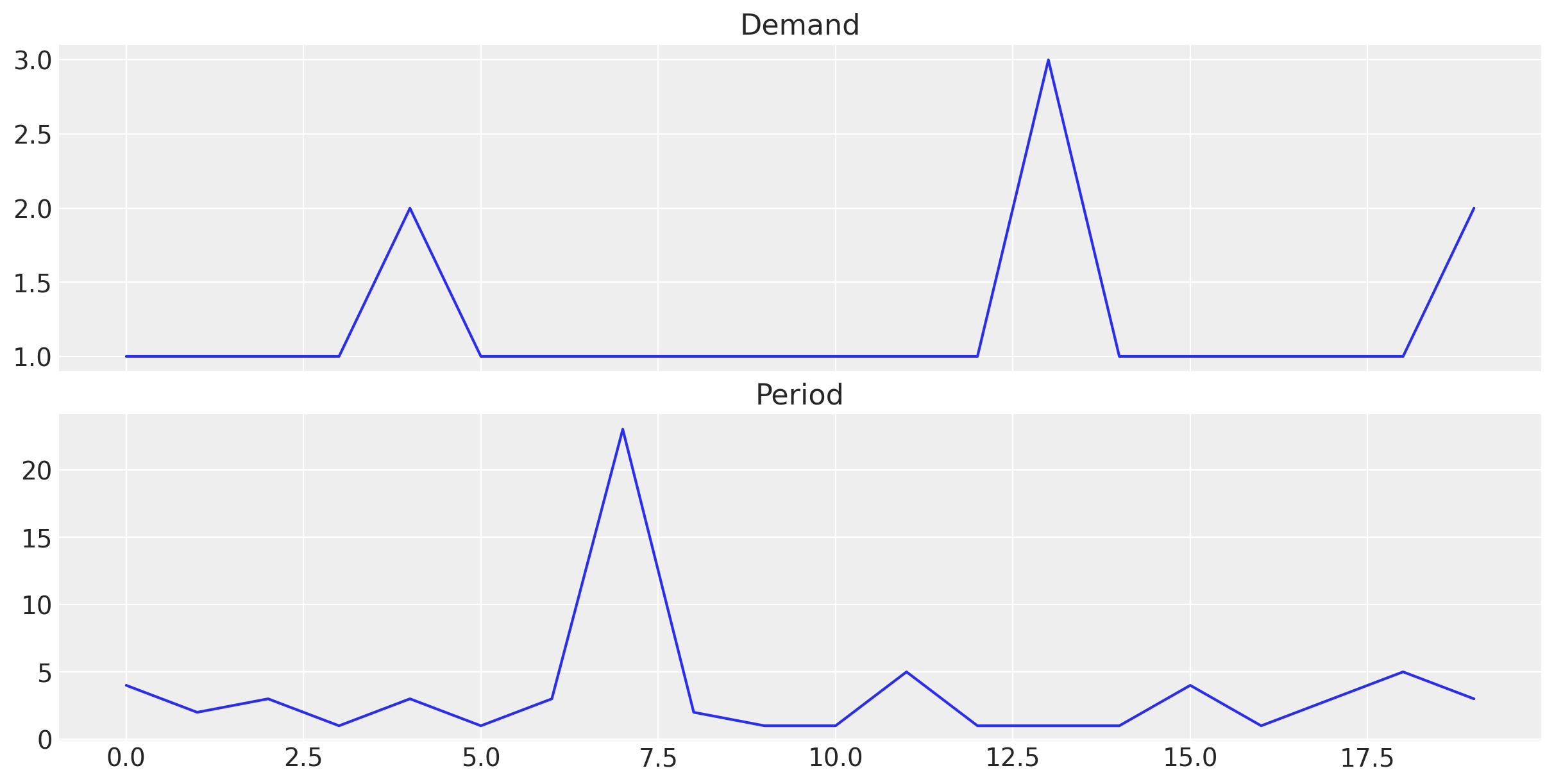
Croston’s Method
def croston_model(z: ArrayLike, p_inv: ArrayLike, future: int = 0) -> None:
z_forecast = scope(level_model, "demand")(z, future)
p_inv_forecast = scope(level_model, "period_inv")(p_inv, future)
if future > 0:
numpyro.deterministic("z_forecast", z_forecast)
numpyro.deterministic("p_inv_forecast", p_inv_forecast)
numpyro.deterministic("forecast", z_forecast * p_inv_forecast)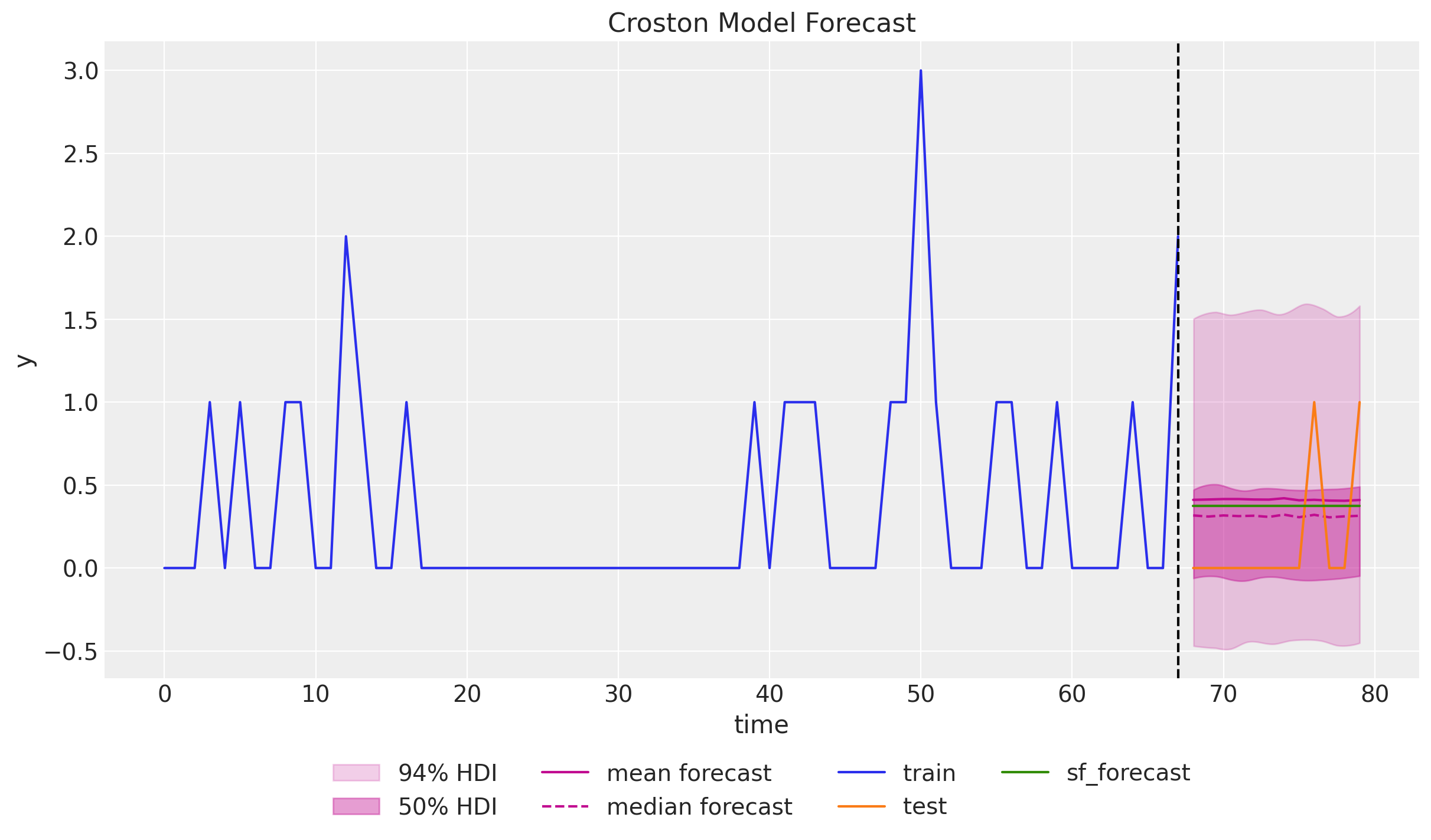
TSB Method
- The TSB method is similar to the Croston’s method: constructs two different time series out of the original one and then forecast each of them separately, so that the final forecast is generated by combining the forecasts of the two time series.
- The main difference between the two methods is that the TSB method uses the demand probability instead of the demand periods.
Zero-Inflated TSB Model
🧪 We can modify the TSB model to include zero-inflation by using a Zero-Inflated Negative Binomial Distribution.
Time-Slice Cross Validation

Forecasting Unseen Demand
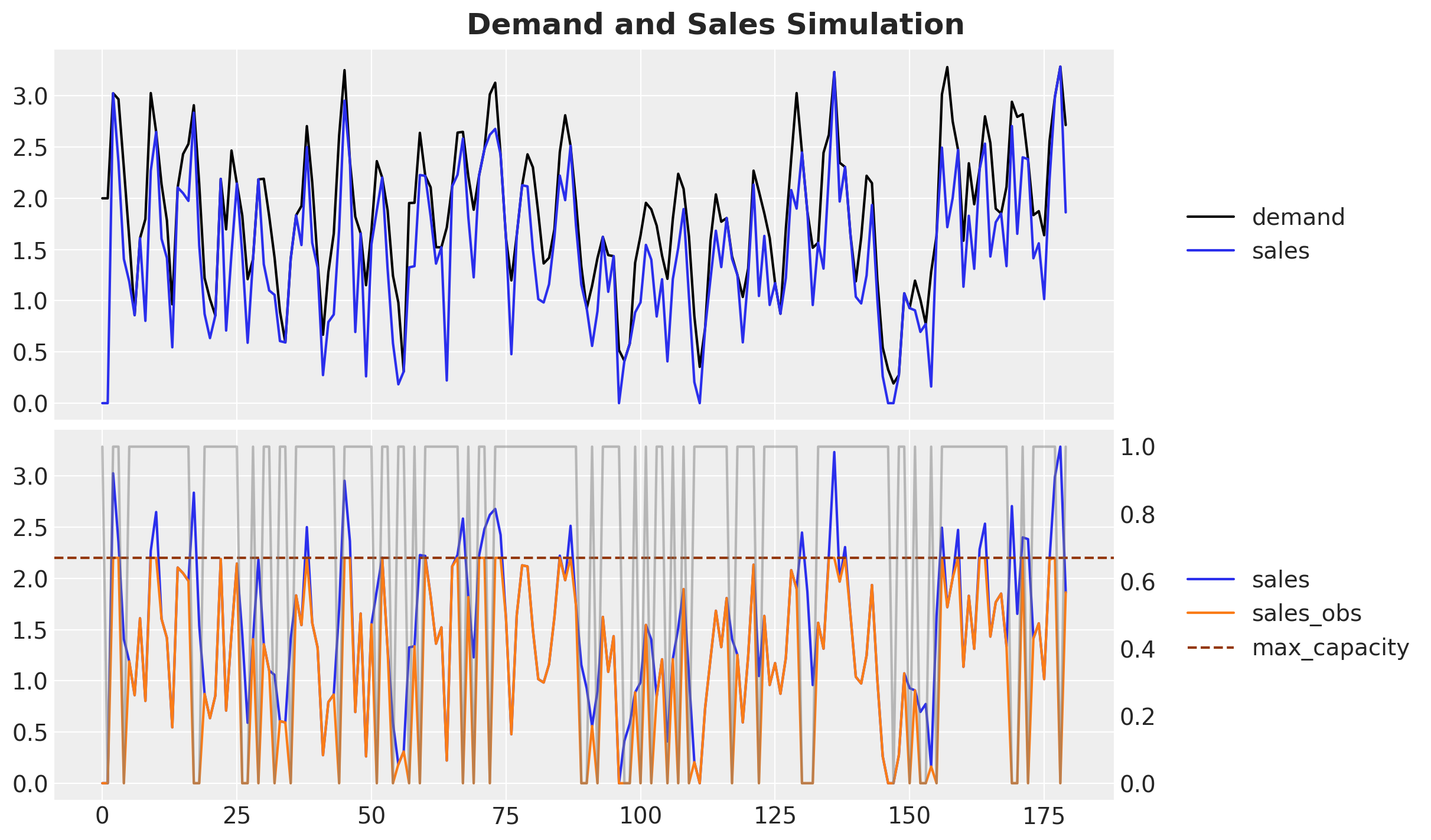
ARIMA Model
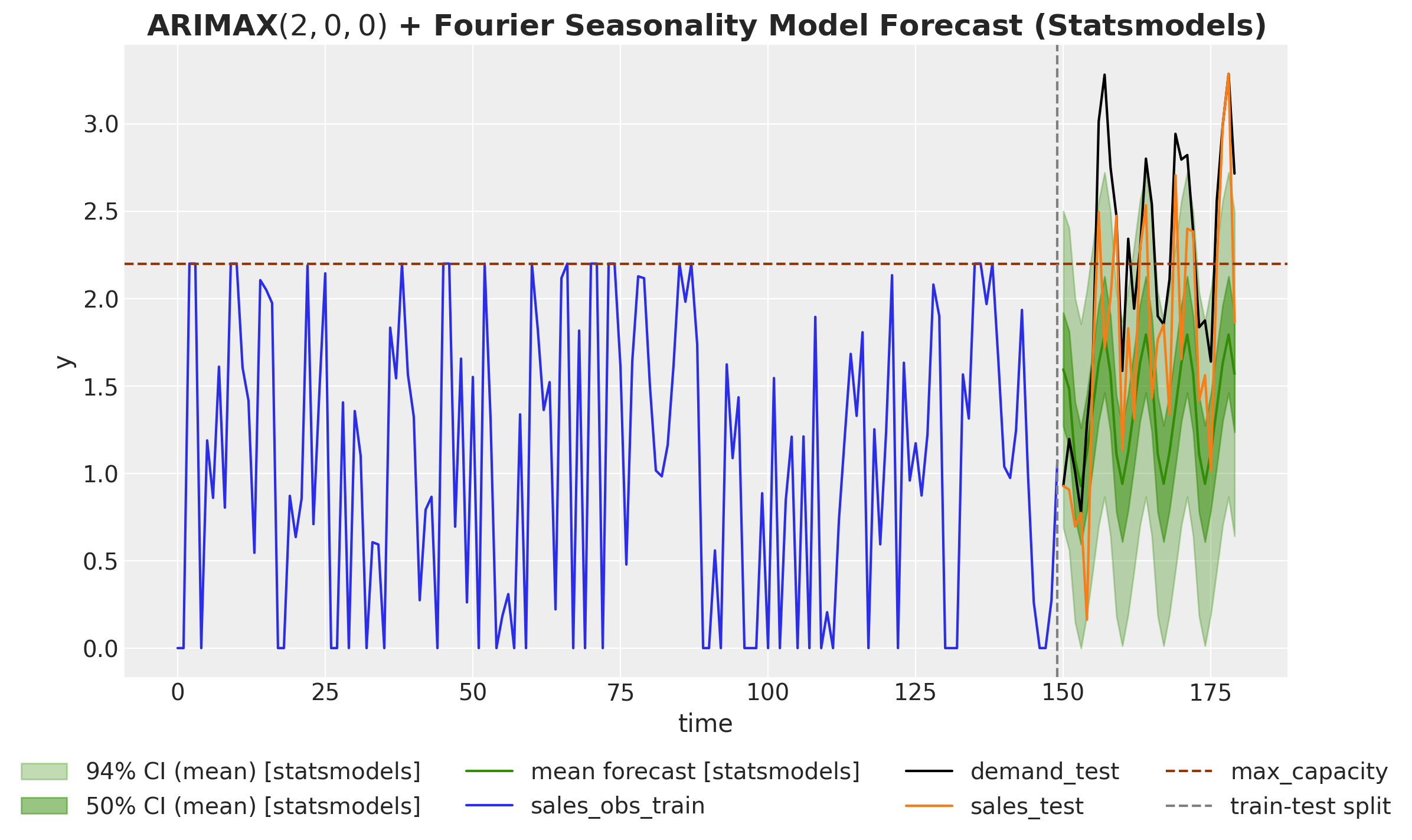
Censored Distributions


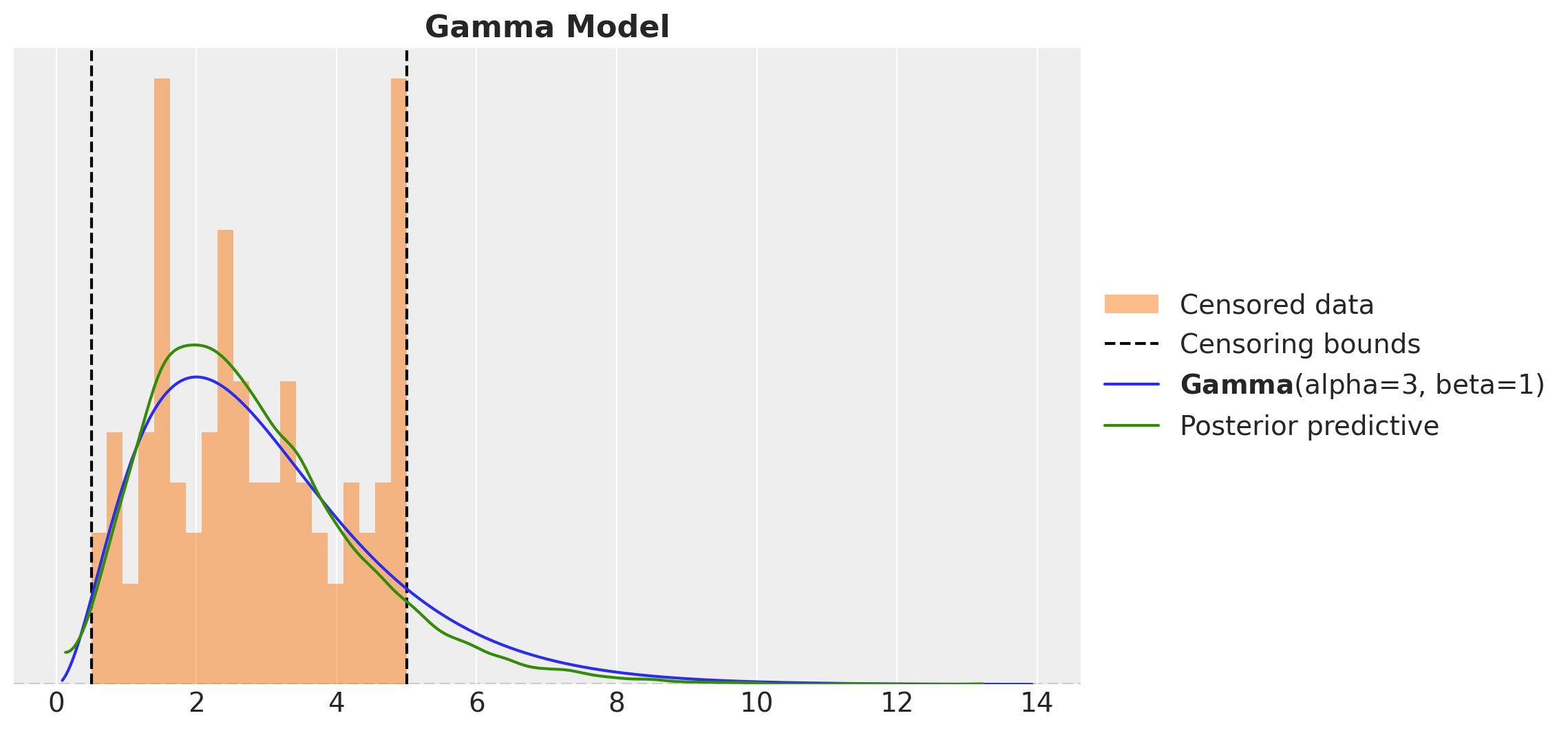

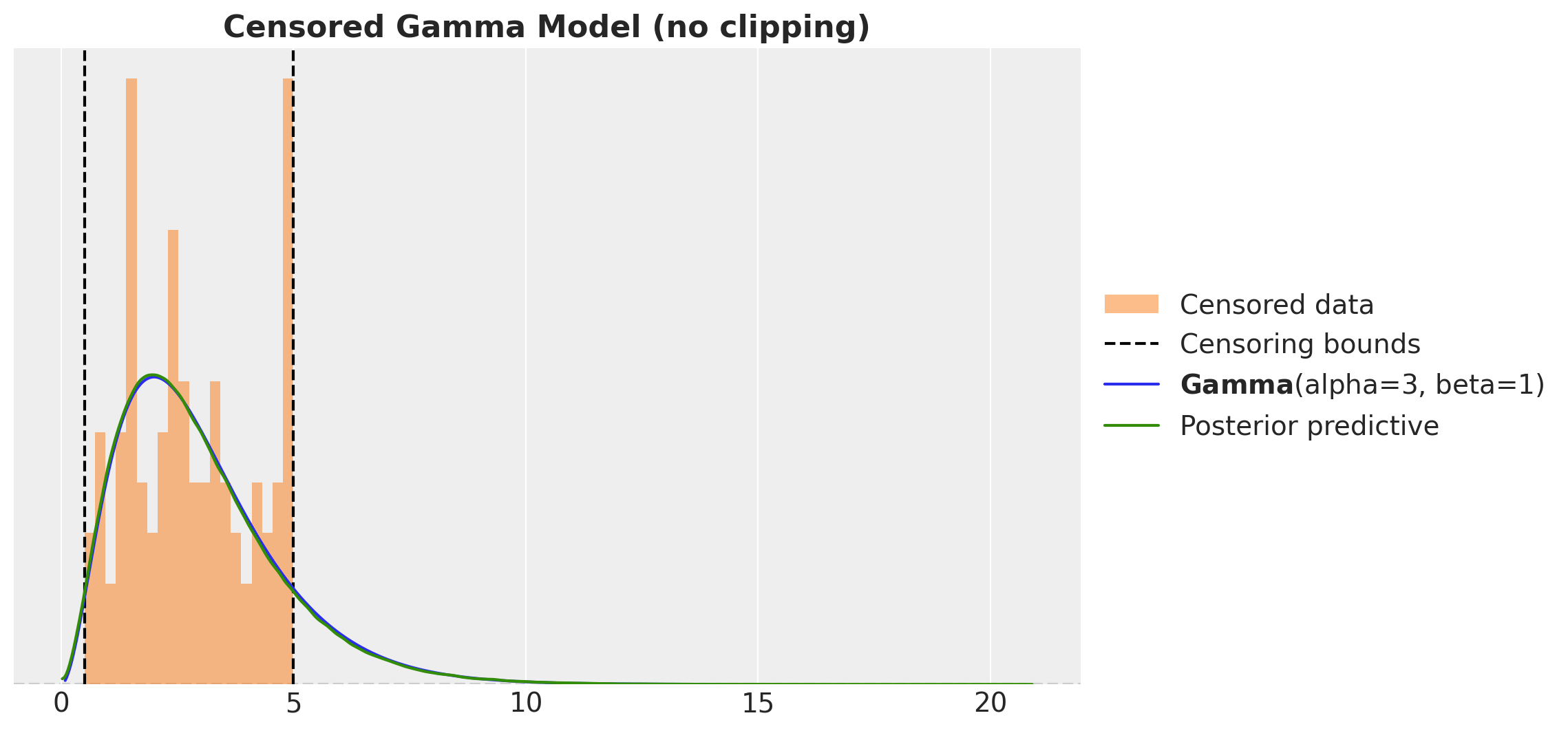
Censored Likelihood
def censored_normal(loc, scale, y, censored):
distribution = dist.Normal(loc=loc, scale=scale)
ccdf = 1 - distribution.cdf(y)
numpyro.sample(
"censored_label",
dist.Bernoulli(probs=ccdf).mask(censored == 1),
obs=censored
)
return numpyro.sample("pred", distribution.mask(censored != 1))Change likelihood distribution in a time-series model:
Censored Time Series Forecast 💡
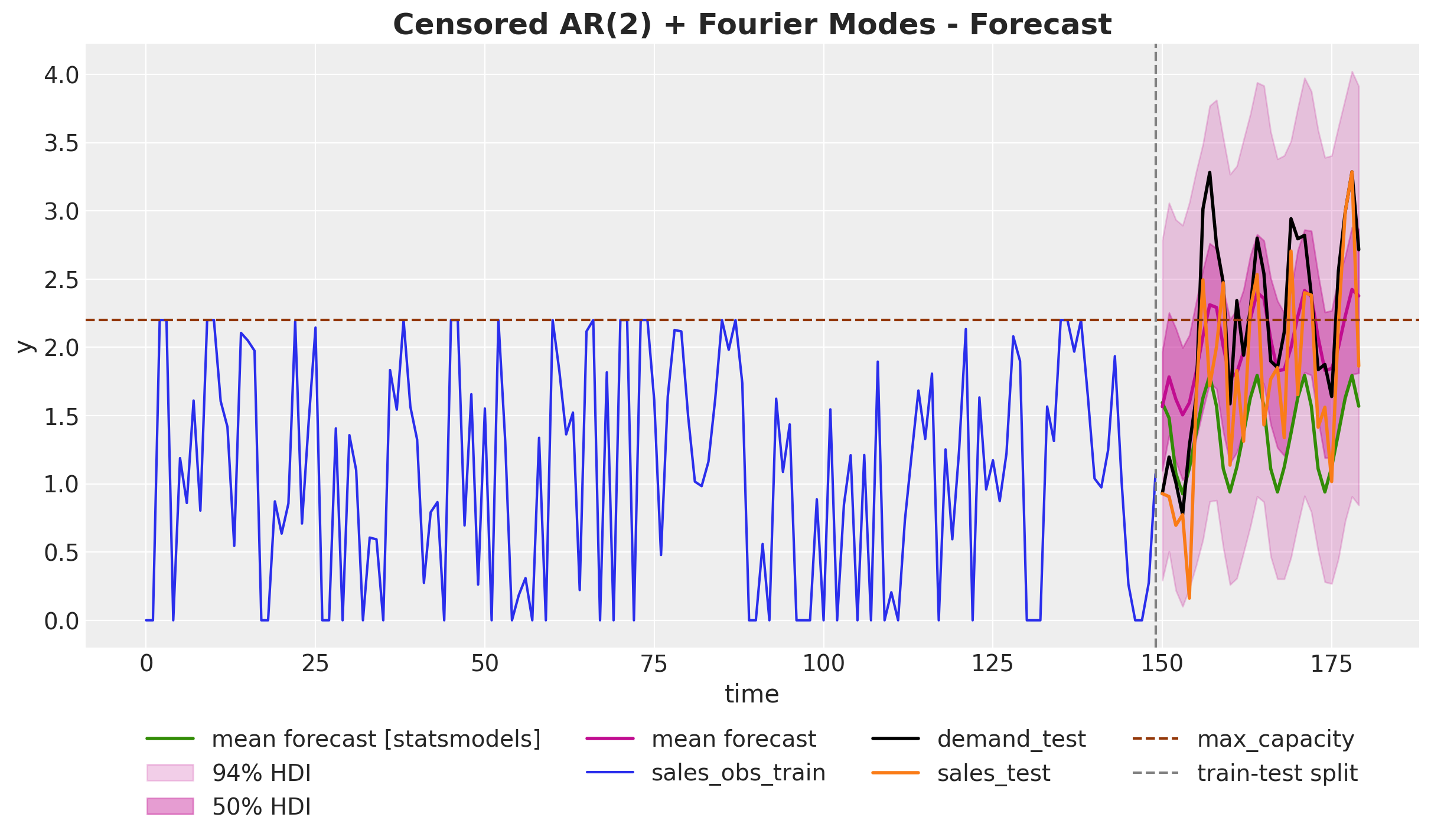
Hierarchical Exponential Smoothing
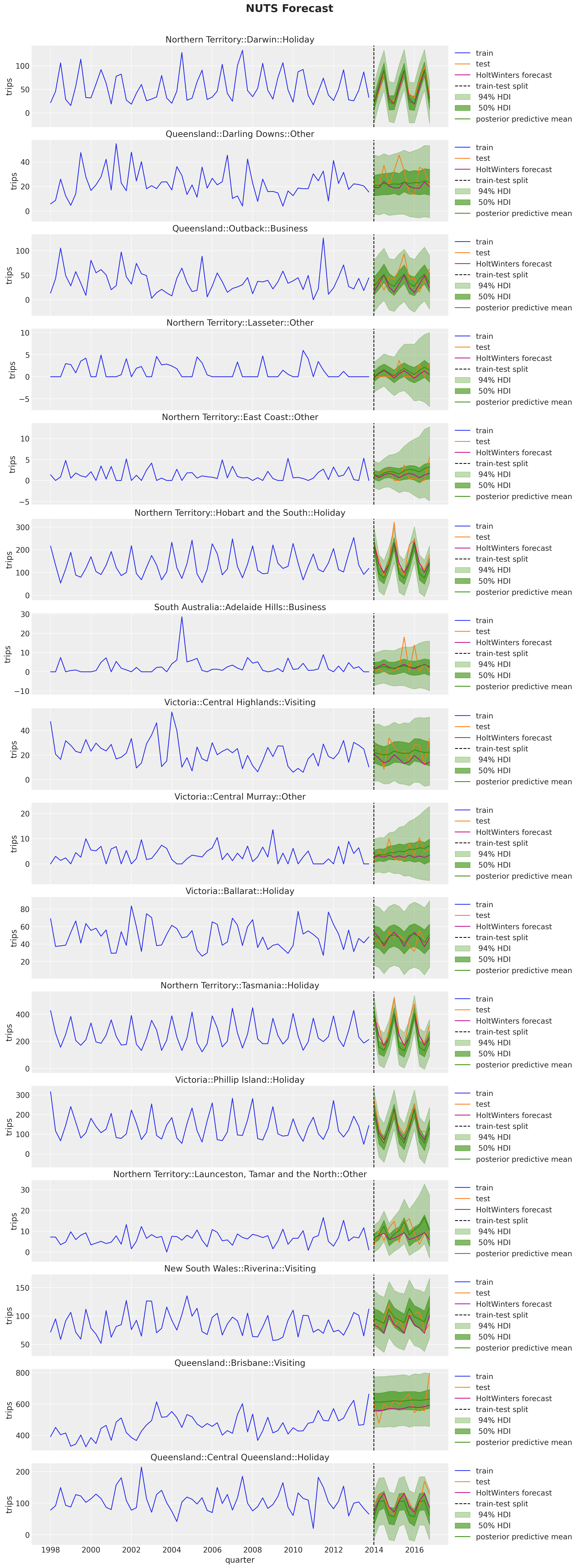
Hierarchical Exponential Smoothing
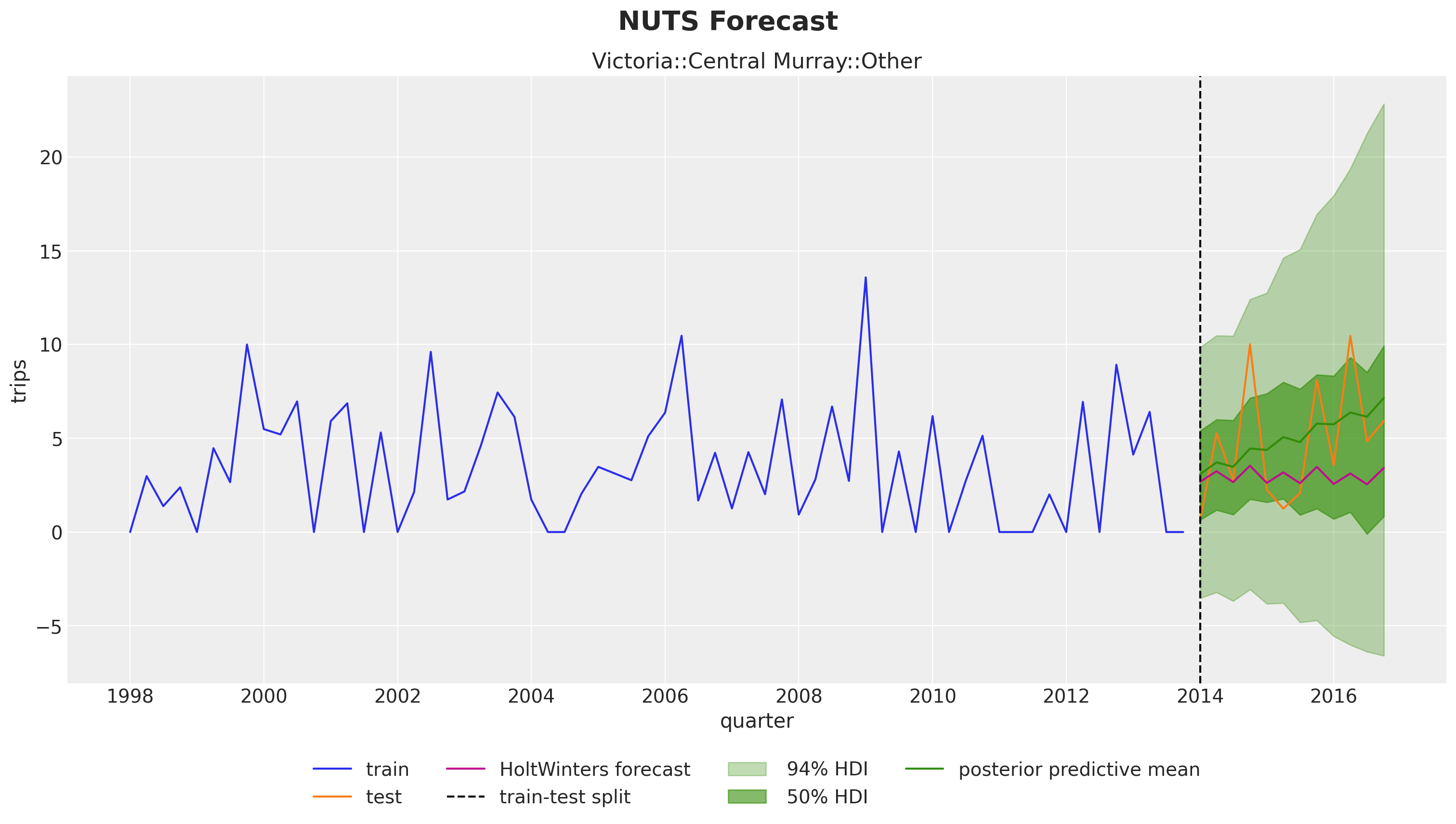
Hierarchical Exponential Smoothing
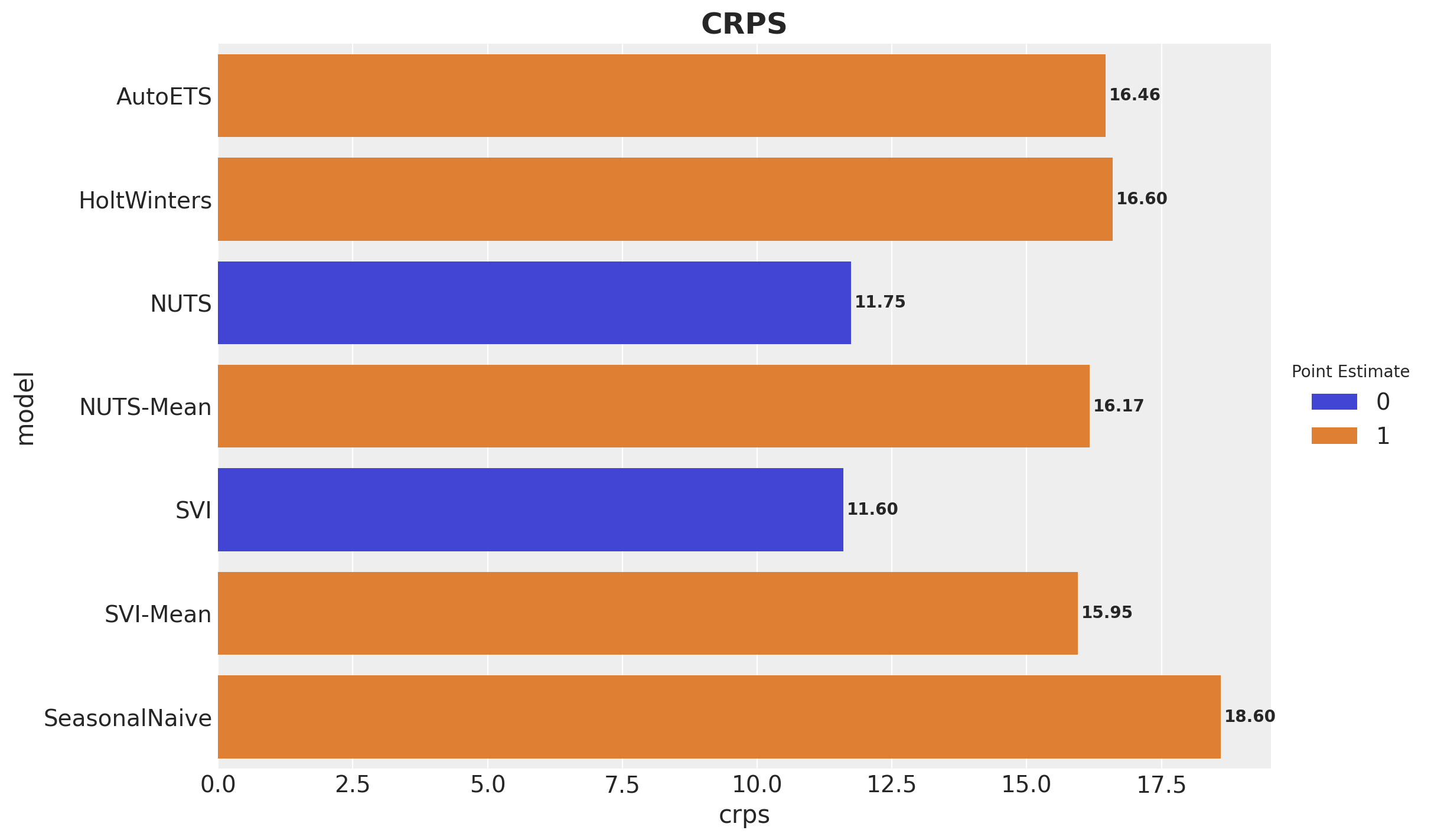
Hierarchical Pricing Elasticity Models
Idea 🤓
Use a hierarchical structure to regularize the demand elasticity parameters.
Hierarchical Pricing Elasticity Models
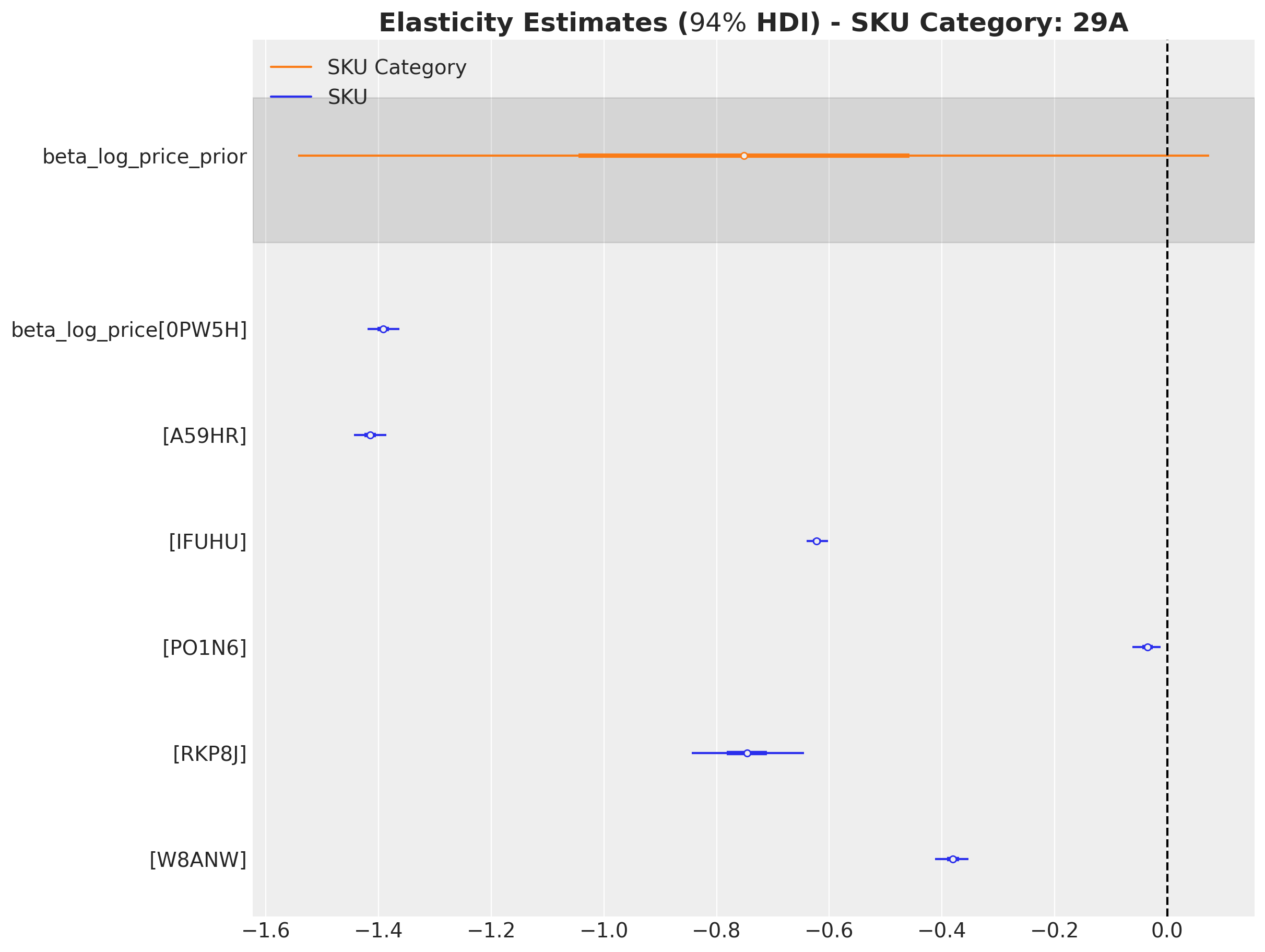
PyMC & Time Series 🚀

PyMC & Time Series 🚀
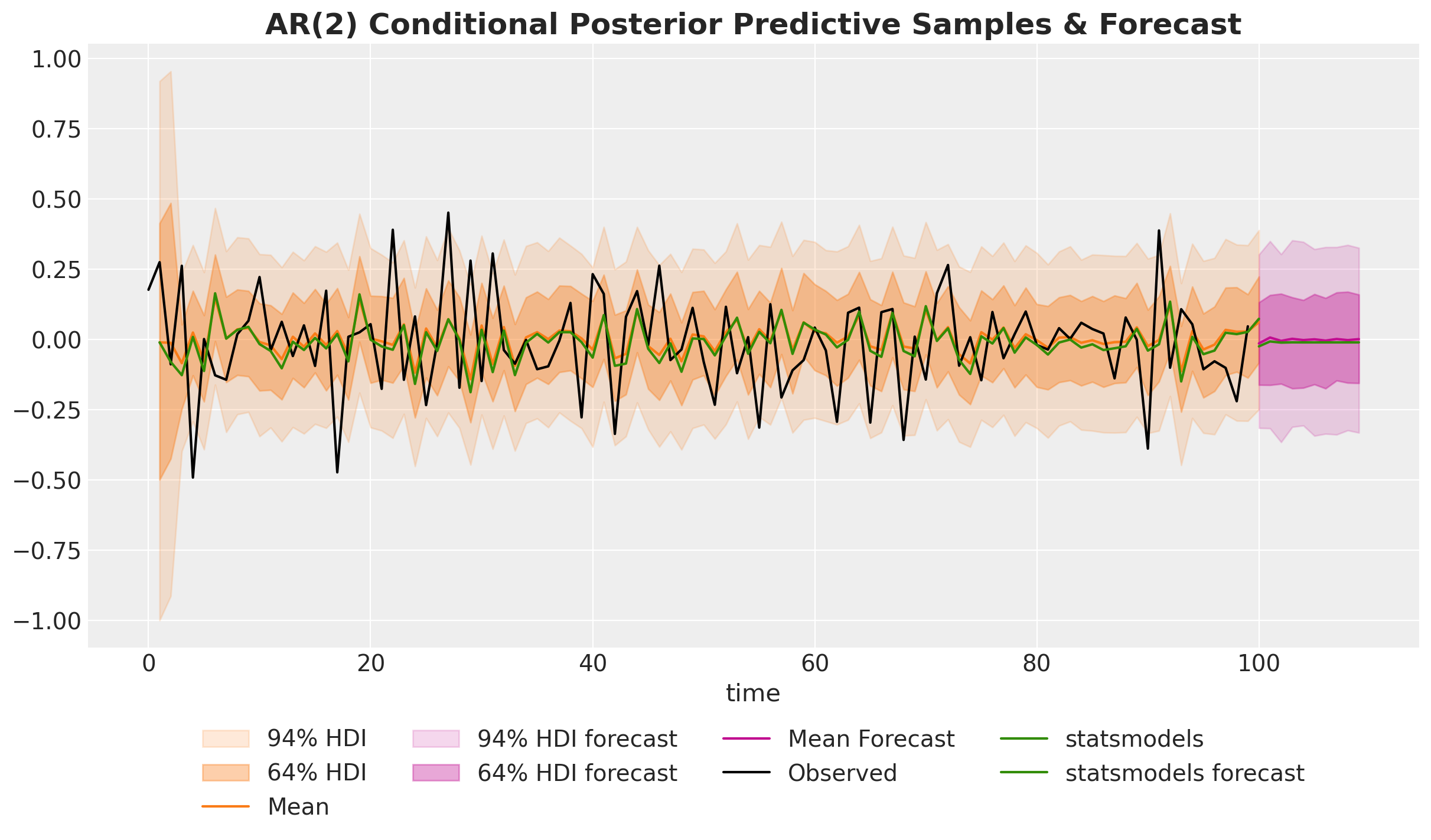
PyMC State Space Module
from pymc_experimental.statespace import structural as st
slow_trend = st.LevelTrendComponent(order=2, innovations_order=[0, 1])
seasonality = st.FrequencySeasonality(name="annual_seasonality", season_length=52, n=2, innovations=False)
exog = st.RegressionComponent(name="exog", state_names=X.columns.tolist(), innovations=False)
measurement_error = st.MeasurementError("measurement_error")
ss_mod = (slow_trend + seasonality + exog + measurement_error).build()References
NumPyro Examples
- Notes on Exponential Smoothing with NumPyro
- Croston’s Method for Intermittent Time Series Forecasting in NumPyro
- Bayesian Censoring Data Modeling
- Demand Forecasting with Censored Likelihood
- Hierarchical Exponential Smoothing Model
PyMC Examples
- PyMC Example: Time Series Models Derived From a Generative Graph
- Time Series Analysis with Bayesian State Space Models in PyMC
Other Blogposts
References
Packages:
Papers
Thank you!


